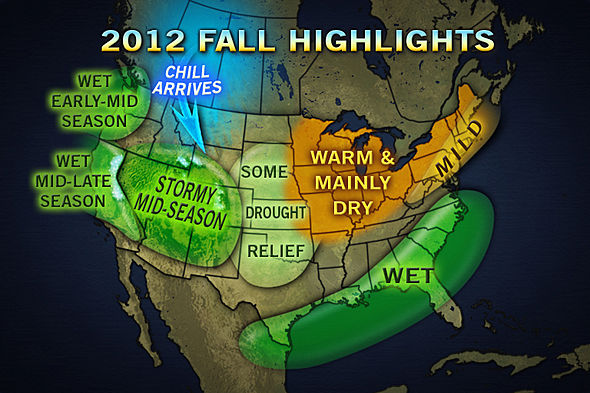2012-2013 Winter Outlook May be White
As we look toward the upcoming winter season, there’s never a lack of speculation about temperatures and snowfall. Especially after a drought-filled spring and summer. While Accuweather.com will not release its official forecast for this season until next month, long range meteorologists are already making predictions of a weak El Niño Southern Oscillation, (ENSO), as it is known by atmospheric scientists.
El Niño is the fluctuation in sea-surface temperatures above the tropical Pacific Ocean. When temperatures are cooler than average, like this past winter, it is known as La Nina. When these waters are warmer than average, it’s called the El Niño phase. Warming the ocean water in turn warms the air above the Pacific, causing weather patterns to change globally. El Niño typically means a snowier winter on the East Coast and average snowfall for the Midwest and Upper Midwest.
Last winter was classified as the La Nina effect, which left us with below-average snowfalls. AccuWeather.com long range meteorologists, headed by Paul Pastelok, are projecting an El Niño this winter. It should be noted that no two El Niños are the same. The strength of this phenomenon can mean a great deal for winter weather. So stick with us and we’ll continue to update you as the National Oceanic and Atmospheric Administration releases its official winter forecasts. Over here, we’re crossing our fingers for some El Niño action!
This Summer, the U.S. experienced the worst drought recorded in five decades. The drought delt a heavy blow to crops and the farming industry – from Kansas to Indiana, and beyond. It also prompted the rapid expansion of several fires in Colorado earlier in the summer. The devastating fires took lives, destroyed properties and caused an estimated $449.7 million in damage, according to the Rocky Mountain Insurance Information Association.
Lately, the Midwest has had some relief from the extreme droughts the region experienced this summer. Meteorologist Meghan Evans of Accuweather.com says, “As storms begin to impact the Northwest in the fall, some moisture will stream into portions of the central and southern Plains at times.”
The recent rains are extremely beneficial for areas that suffered severe to exceptional drought conditions. The primary areas receiving this much-needed moisture are Western and central portions of Nebraska, Kansas, Colorado, Oklahoma and Texas.




